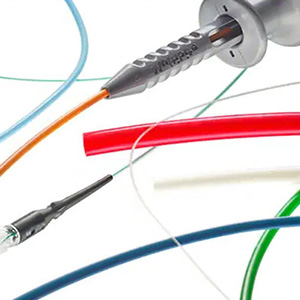Heat shrink tubing, commonly used in electronics for insulating wires, also has several medical applications due to its versatility, biocompatibility, and ability to provide precise and secure coverage. Here are some key medical uses of heat shrink tubing:
- Catheter Manufacturing:
- Heat shrink tubing is used to create catheters with smooth, precise outer surfaces. It can be used to bond different materials together, such as attaching a soft, flexible tip to a stiffer catheter body, enhancing patient comfort and safety during insertion.
- Surgical Instruments:
- To improve grip and durability, heat shrink tubing can be applied to the handles of surgical instruments. It provides insulation against electrical currents in electrosurgical devices, enhancing safety for both the patient and the surgeon.
- Endoscope Construction:
- Heat shrink tubing is used in the manufacturing and repair of endoscopes. It helps in bundling optical fibers, protecting delicate components, and providing a smooth, durable outer layer that can withstand sterilization processes.
- Wire and Cable Management in Medical Devices:
- In medical devices, heat shrink tubing is used to organize and protect wires and cables. This is particularly important in devices where space is limited and reliability is critical, such as in pacemakers or defibrillators.
- Orthopedic Bracing and Prosthetics:
- Heat shrink tubing is utilized in the fabrication of orthopedic braces and prosthetic devices. It can be used to secure foam padding, attach straps, or provide a protective covering that is both flexible and durable.
- Biomedical Sensor Encapsulation:
- Heat shrink tubing is used to encapsulate and protect biomedical sensors. This ensures that the sensors remain functional and sterile, and it can also help in attaching the sensors to other medical devices or to the patient’s body.
- Drug Delivery Systems:
- In certain drug delivery systems, heat shrink tubing can be used to create controlled-release mechanisms or to provide a protective barrier for drug-coated surfaces.
- Joint Protection and Strain Relief:
- Heat shrink tubing is applied to joints and connections in medical devices to provide strain relief and protect against mechanical stress. This prolongs the lifespan of the devices and ensures reliable performance.
The choice of material for medical-grade heat shrink tubing is critical, as it must meet stringent biocompatibility and sterilization requirements. Common materials include polyolefin, fluoropolymer, and silicone, each offering different benefits in terms of flexibility, heat resistance, and chemical inertness.


